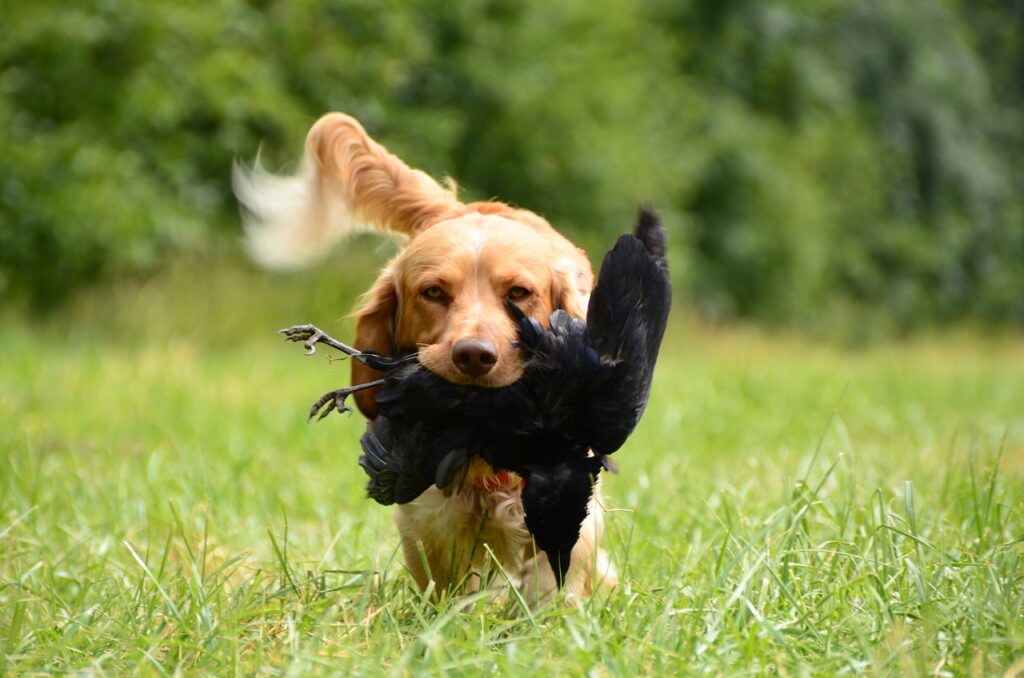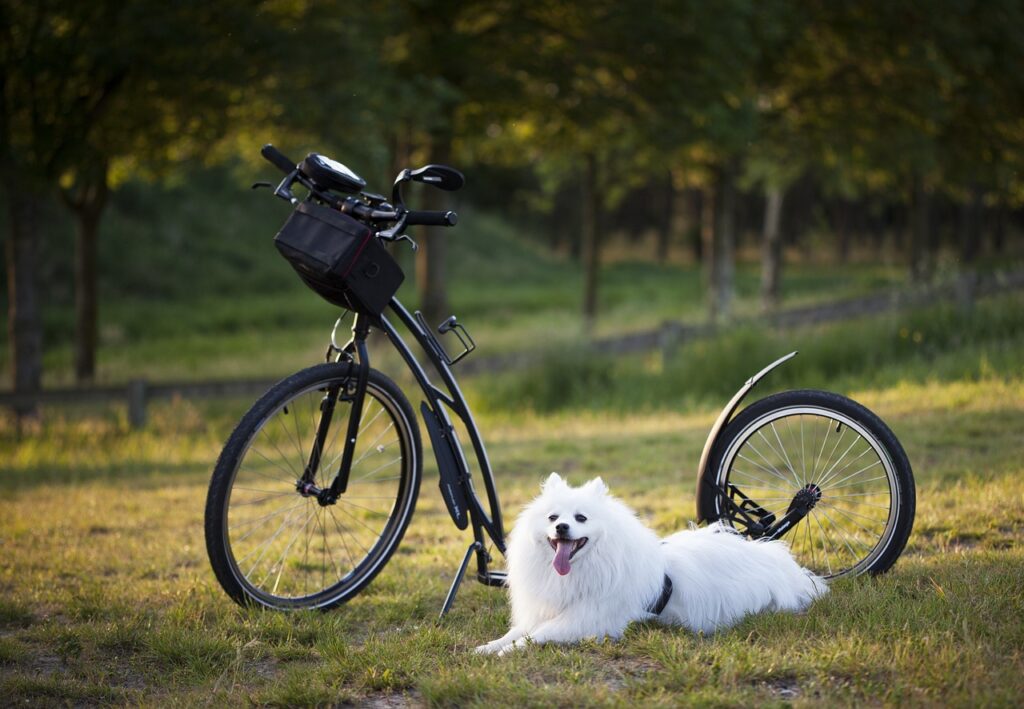
Training a dog is a fascinating journey that comes with its own set of rewards and challenges. Have you ever wondered how long it actually takes to train a dog? Whether you’re a first-time dog owner or considering bringing a new furry companion into your home, understanding the time commitment involved in training is essential. From basic obedience commands to more advanced skills, the length of time it takes to train a dog can vary depending on numerous factors such as the dog’s age, breed, temperament, and previous experiences. So, let’s explore the wonderful world of dog training and discover the answer to the question, “How long does it take to train a dog?”

Factors Affecting Training Length
Breed and Individual Characteristics
The length of time it takes to train a dog can vary depending on several factors. One of the key factors is the breed and individual characteristics of the dog. Some breeds are known for being quick learners and may pick up commands and training techniques more easily, while others may require more time and repetition. Additionally, each dog has its own unique temperament and personality, which can also impact the training process.
Previous Training and Experience
Another factor that can affect the length of training is the dog’s previous training and experience. If a dog has had some basic obedience training in the past, it may already have a foundation and understanding of certain commands. On the other hand, a dog with no prior training may require more time and effort to teach the basics.
Owner Dedication and Commitment
Your dedication and commitment as the owner play a crucial role in the training process. Consistency and regularity in training sessions can significantly impact the length of time it takes to train a dog. By setting aside time each day for training and being consistent in your approach, you can help expedite the learning process for your furry friend.
Training Methods and Techniques
The specific methods and techniques used in training can also influence the training length. Positive reinforcement, which involves rewarding desired behaviors, is widely recommended as an effective and humane training approach. Other techniques like clicker training, marker training, target training, and reward-based training can also be utilized. The chosen method should align with your dog’s learning style and needs.
Consistency and Frequency of Training
Consistency and frequency of training sessions are essential for successful training. Short, frequent sessions are generally more effective than longer, infrequent ones. By consistently reinforcing commands and practicing regularly, your dog will quickly learn and retain the information. Training should be viewed as an ongoing process rather than a one-time event.
Physical and Mental Health of the Dog
The physical and mental health of the dog can impact its ability to learn and progress in training. A healthy dog with no underlying health issues will likely have the energy and focus needed for training. On the other hand, a dog that is experiencing physical discomfort or mental distress may struggle to concentrate and learn new commands. It’s important to consider your dog’s overall well-being during the training process.
Age of the Dog
The age of the dog is an important factor in determining training length. Puppies typically have shorter attention spans and may require shorter training sessions. They also have a critical socialization period during which they should be exposed to different environments, people, and animals. Adolescent dogs may exhibit some rebellious behaviors, but with proper training and patience, they can still learn quickly. Adult dogs may take longer to train, depending on their previous training and experiences.
Socialization and Environment
Socialization plays a crucial role in training and helps dogs develop appropriate behavior in various situations. Properly socialized dogs tend to be more adaptable and confident, making the training process smoother and faster. The environment in which the dog is trained also plays a role. A calm, distraction-free environment can help the dog focus and learn more effectively.
Basic Obedience Training
Sit
Teaching a dog to sit is one of the basic commands that is often taught early in training. The sit command is not only practical but also helps establish control and discipline. By using positive reinforcement techniques, such as rewards and praise, you can teach your dog to sit on command.
Stay
The stay command is essential for keeping your dog in one place until given permission to move. It is particularly valuable in situations where you need your dog to remain calm and not wander off. Teaching the stay command requires patience and consistent practice, gradually increasing the duration of the stay.
Lie Down
The lie down command is useful when you want your dog to settle down and relax. It can be taught by luring the dog into a lying position with a treat or by gently guiding the dog’s body into a down position. Positive reinforcement is used to reinforce and reward the desired behavior.
Come
The recall command, or “come,” is crucial for keeping your dog safe and under control. Teaching your dog to come when called can prevent accidents, keep them out of danger, and allow for off-leash activities. Using positive reinforcement and rewarding your dog for coming when called will help solidify the behavior.
Leave It
The leave it command is essential for preventing your dog from picking up or consuming harmful objects. Whether it’s food on the ground or something dangerous, teaching your dog to leave it can protect them from harm. The leave it command involves redirecting your dog’s attention and rewarding them when they choose to ignore the object of interest.
Drop It
The drop it command is useful for getting your dog to release an item they have picked up or are holding onto. This command can be important for preventing resource guarding behaviors or avoiding dangerous situations. Training your dog to drop it involves using positive reinforcement and offering a reward when they willingly let go of the object.
Advanced Training
Advanced Commands and Tricks
Once your dog has mastered basic obedience commands, you can move on to teaching more advanced commands and tricks. These can include commands like “shake,” “roll over,” or “play dead.” Advanced commands and tricks not only provide mental stimulation but also strengthen the bond between you and your dog.
Agility Training
Agility training involves teaching your dog to navigate through an obstacle course, including jumps, tunnels, and weave poles. It requires coordination, speed, and focus. Agility training can be a fun and challenging activity for both you and your dog, promoting physical fitness and mental stimulation.
Service Dog Training
Service dog training is a specialized form of training that focuses on teaching dogs specific tasks and behaviors to assist individuals with disabilities. The training length for service dogs can vary depending on the complexity of the tasks they need to perform. It often involves extensive training and certification for the dog to become a reliable service companion.
Search and Rescue Training
Search and rescue training is designed to teach dogs to locate and retrieve individuals in various situations, such as natural disasters or missing person cases. This type of training requires specialized skills and can take months or even years to fully train a search and rescue dog. The length of training will depend on the dog’s breed, temperament, and the complexity of the tasks involved.
Specialized Training
Guard Dog Training
Guard dog training focuses on teaching dogs to protect and defend property or individuals. This type of training requires professional guidance and expertise due to the potentially dangerous nature of the tasks involved. The duration of guard dog training can vary depending on the desired level of proficiency and the individual dog’s aptitude.
Therapy Dog Training
Therapy dog training aims to prepare dogs to provide comfort and emotional support to individuals in hospitals, nursing homes, schools, and other therapy settings. These dogs must undergo specific training to ensure they remain calm, well-behaved, and sensitive to the needs of those they interact with. The length of therapy dog training can vary depending on the desired certifications and the dog’s temperament.
Assistance Dog Training
Assistance dog training focuses on teaching dogs to assist individuals with disabilities in tasks such as opening doors, retrieving objects, or providing stability and support. This specialized training can take several months to years, depending on the complexity of the tasks and the individual needs of the person being assisted.

Puppy Training
Socialization
Puppy training should ideally start as early as 8-16 weeks of age to facilitate proper socialization. Socialization involves exposing your puppy to a wide range of people, animals, and environments. It helps to ensure that your puppy grows up to be confident, adaptable, and well-behaved in various situations.
House Training
House training, or teaching your puppy appropriate bathroom habits, is an essential aspect of puppy training. It requires consistency and patience to establish a routine and reinforce positive behaviors. The length of time it takes to fully house train a puppy can vary depending on the breed and individual puppy.
Bite Inhibition
Bite inhibition training is crucial to teach puppies how to control the force of their bite. This training helps to prevent accidental biting or aggressive behavior as the puppy grows older. Consistent and gentle training, along with appropriate chew toys, can help teach puppies to use their mouths gently.
Basic Obedience
Basic obedience training for puppies includes teaching them to sit, stay, come, and lie down, as well as proper leash manners. These foundational commands help establish communication and boundaries between you and your puppy. The duration of puppy obedience training is typically shorter compared to training adult dogs, averaging around 8-12 weeks.
The Importance of Consistency and Patience
Consistency and patience are vital when it comes to dog training. Dogs learn best through repetition and positive reinforcement. By being consistent in your training methods and expectations, you create clear boundaries and expectations for your dog. It is also crucial to remain patient and understanding, as dogs may not immediately grasp a command or behavior. With time, consistency, and patience, you will see progress and improvements in your dog’s training.

Methods and Techniques
Positive Reinforcement
Positive reinforcement is a training method that focuses on rewarding and praising desired behaviors while ignoring or redirecting unwanted behaviors. This approach creates a positive association with training and increases the likelihood of the behavior being repeated. Treats, verbal praise, and affection are commonly used as rewards in positive reinforcement training.
Clicker Training
Clicker training involves using a handheld device that makes a distinct clicking sound to mark desired behaviors. The click serves as a bridge to communicate to the dog that they have performed the correct behavior. Clicker training works by pairing the click with a reward, allowing the dog to associate the click with a positive outcome.
Marker Training
Marker training is a form of training that uses a verbal or visual marker, such as a word or a hand signal, to mark and reinforce desired behaviors. The marker is followed by a reward or reinforcement, creating a clear association between the behavior and the reward. Marker training helps in clear communication between the trainer and the dog.
Target Training
Target training involves teaching your dog to touch a specific target, such as a stick or your hand, with their nose or paw. This training technique is useful for teaching dogs various commands or tricks and can also be used to redirect their attention or position them in specific locations.
Reward-Based Training
Reward-based training involves using treats, toys, or other rewards as positive reinforcement to encourage desired behaviors. By offering rewards, you motivate your dog to repeat the behavior you want. This training method is based on the principle of positive reinforcement and is effective in teaching new commands or behaviors.
Age-Specific Training
Training a Puppy (8-16 weeks)
Training a puppy should start as early as possible to establish good habits and behaviors. During this stage, focus on socialization, potty training, basic commands such as sit and stay, and bite inhibition training. The length of training sessions should be shorter to accommodate the puppy’s attention span.
Training an Adolescent Dog (4-12 months)
Adolescent dogs often go through a rebellious phase and may challenge boundaries established during puppyhood. Consistent and firm training, coupled with positive reinforcement, is crucial during this stage. Reinforcing basic commands while introducing more advanced commands and tricks can help redirect their energy and keep them mentally stimulated.
Training an Adult Dog (1 year and older)
Training adult dogs may take longer depending on their previous training and experiences. It is essential to assess their behavior, obedience level, and any specific issues that may need to be addressed. Positive reinforcement, consistency, and patience remain crucial during this stage.
Training Duration Estimates
Basic Obedience Training: 4-6 Weeks
Basic obedience training typically lasts around 4-6 weeks, but this can vary depending on the individual dog’s progress and the specific commands being taught. Consistency and frequent practice are key to establishing a strong foundation in basic obedience.
Advanced Training: 6+ Weeks
Advanced training can vary significantly in duration depending on the complexity of the commands and tricks being taught. It generally takes longer than basic obedience training, often spanning six weeks or more. Consistent practice and patience are essential during advanced training.
Specialized Training: Varies
The length of specialized training, such as guard dog, therapy dog, or assistance dog training, can vary greatly. It depends on the specific skills and tasks the dogs need to learn and master. Specialized training can take months or even years to achieve the desired level of proficiency.
Puppy Training: 8-12 Weeks
Puppy training typically lasts for about 8-12 weeks, focusing on socialization, basic commands, and addressing specific puppy behaviors. The consistency and quality of training during this crucial stage significantly impact the puppy’s development and behavior as an adult dog.
Age-Specific Training: Varies
The training duration for age-specific training can vary depending on the individual dog, their previous training, and any specific issues that need to be addressed. It is important to tailor the training to the dog’s age and learning abilities.
Conclusion
The length of time it takes to train a dog can vary depending on various factors, including breed and individual characteristics, previous training and experience, owner dedication and commitment, training methods and techniques, consistency and frequency of training, physical and mental health, age of the dog, socialization, and environment. Basic obedience training typically lasts around 4-6 weeks, while advanced training can take six weeks or more. Specialized training, such as guard dog or therapy dog training, can vary greatly in duration. Puppy training lasts for approximately 8-12 weeks and focuses on socialization, house training, bite inhibition, and basic obedience. Regardless of the specific training, consistency, patience, and positive reinforcement are key to successful training. With time and effort, you can help your furry friend become a well-behaved and obedient companion.

